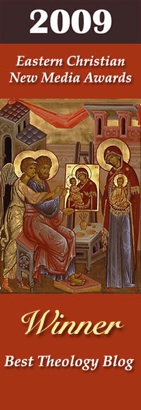
Many people may be familiar with the book, Drawing on the Right Side of the Brain. It’s sort of popular around my house, almost as a shorthand for a complete understanding of how we see the world around us. The author, Betty Edwards, demonstrates through art exercises what science has known for quite some time – that the brain is differentiated for various tasks. The verbal part of our life, including reasoning, is largely a left brain activity, while art and a number of other things are processed by the right brain.
Of course, my writing here is generally about theology and not neurobiology, but this left brain/right brain distinction has become for me a way of thinking about my own journey as a Christian. I have sought in the past number of years to become more open to a “right brain” approach to God, not ignoring the rest of me – such as refusing the use of reason and the like – but realizing that there is another way of seeing and understanding that I’ve too long neglected.
The 7th Ecumenical Council (787 A.D.) made an amazing statement as part of its official Tomos, or Proclamation: “Icons do with color, what Scripture does with words.” It is not simply an interesting insight into how icons signify, but an even greater insight into the unity of our knowledge of God.
Someone asked me yesterday, “How do people come to believe in God?” They had in mind someone in particular who had grown up in a loving Christian home and yet had no faith in God.
My answer was to acknowledge the mystery of our relationship with God. C.S. Lewis, a great champion of logic all his life, recalls that as a young Oxford don, he got on a bus one day in Oxford as an atheist, and got off the bus as a believer in God (at least some sort of God). Where and how it happened along the way remained a mystery to him. Why that bus? Why that day?
My own earliest encounters with God were through pictures (indeed I’m not sure I could as yet read). In a pre-school Sunday School room (I can still smell it), in a country Baptist Church, we had pictures of Jesus hanging on the walls. One was Jesus the Good Shepherd; another was Jesus and the Little Children. Those pictures of Jesus were the revelation of God to me rather than the violent, fiery anger that we heard weekly in sermons.
In a similar manner, a small bible given to me at birth by the Women’s Sunday School Class in that same Church, had a frontispiece that was one of Raphael’s Madonnas. The beauty and radiant love of her face are among my earliest religious memories. I think I have always loved the Mother of God. (It is quite interesting to me that a copy of the same Madonna hung above Fyodor Dostoevsky’s writing desk.)
For too long Christianity in our culture has allowed half its brain to be ignored with a resulting imbalance in its perception of God. One of the great joys of Orthodoxy is getting half my brain back.
Icons do with color what Scripture does with words. Perhaps God means to save the whole of us.










